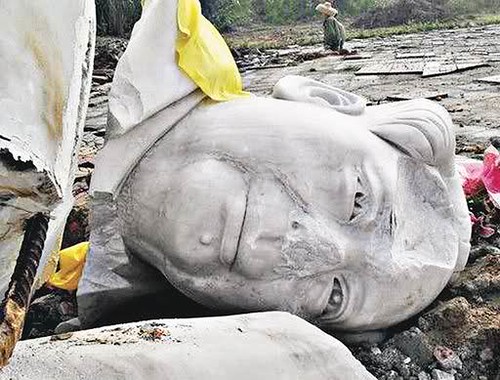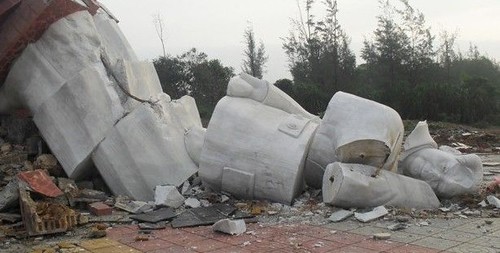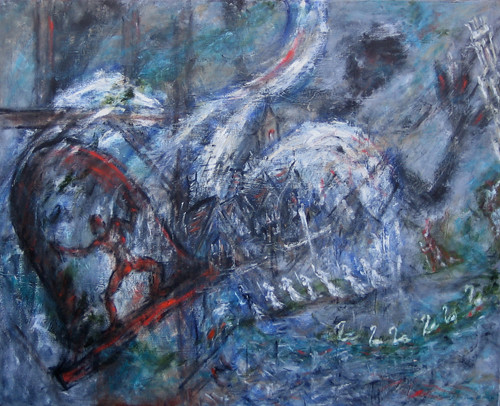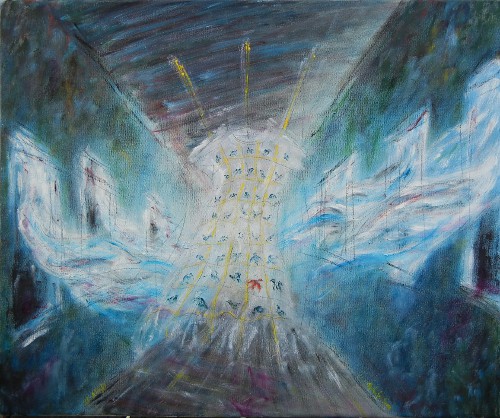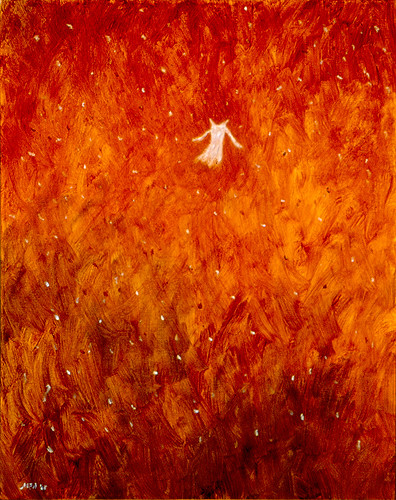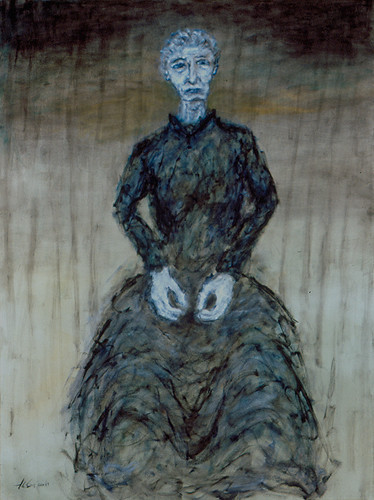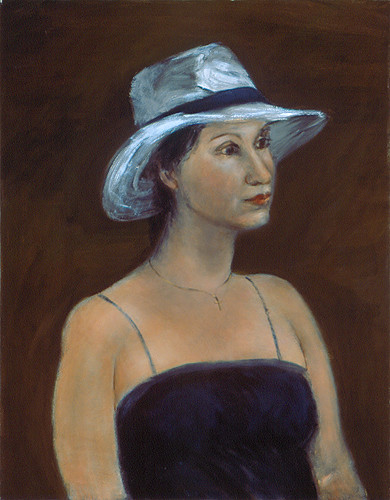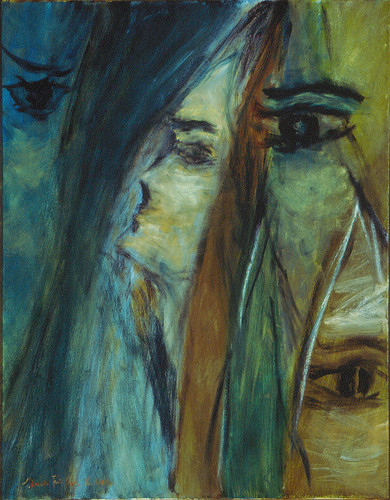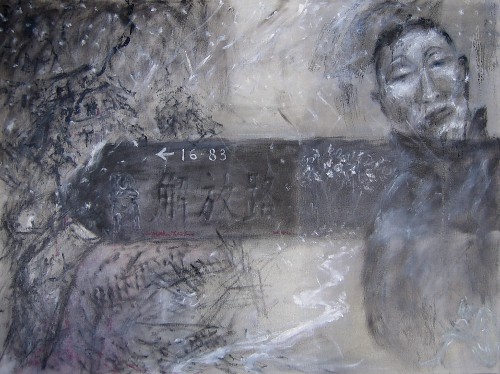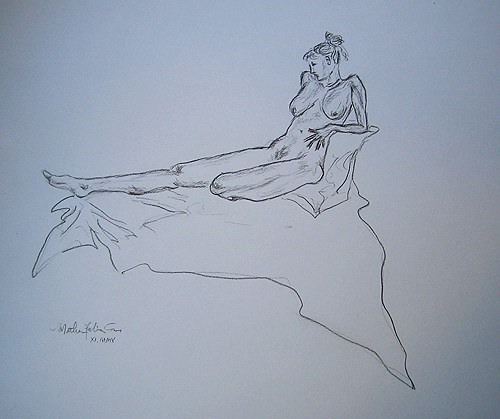
The performance of The Rape of Lucretia by Benjamin Britten by the visiting Castleton Festival Opera, conducted by its founder maestro Lorin Maazel, in Zellerbach Hall, Berkeley, was
a richly rewarding evening.
As summarized by Steve Masover in his
thoughtful reminiscence, "the opera tells of Tarquinius, a prince of Rome and son of the last Etruscan king, and of chaste Lucretia. Tarquinius savagely rapes Lucretia, who consequently commits suicide. These grave offenses rally the simmering Roman populace to a boil and precipitate overthrow of Etruscan rule and establishment of the Republic."
The story is a classic and had been rendered many times by many authors, playwrights and artists. When I sat in the theater, I was struck a few times by the ambiguity this version by Benjamin Britten and his librettist Ronald Duncan.
What I am going to say below, perhaps will be controversial, and might upset someone with my observations which might not be the intent of neither the creators of the opera, nor the presenters of this particular production.
However, classics invite comparison and re-thinking. At least, my wayward observation and thoughts, perhaps can be interpreted as viewing the classic from another angle.
I was struck by the demeanor of Lucretia (contralto Ekaterina Metlova) when she greeted Tarquinius, a mixture of dignity and slight coquettishness, which naturally does not mean an invitation for invasion of her body and soul, as many rapists would have claimed to defend their monstrous deeds. Women's self-expressions are by no means invitations of insults of any kinds.
After the brutal on-stage rape, Lucretia summoned her husband home and revealed her shame to everyone, in her heartbroken and eloquent lament:
Lucretia
Last night Tarquinius ravished me
And tore
The fabric of our love.
What we had woven
Tarquinius has broken.
What I have spoken
Never can be forgotten.
Oh, my love, our love was too rare
For life to tolerate or fate forbear from soiling.
For me this shame, for you this sorrow.
Collatinus [her husband]
If spirit's not given, there is no need of shame.
Lust is all taking - in that there's shame.
What Tarquinius has taken
Can be forgotten;
What Lucretia has given
Can be forgiven.
(He kneels to Lucretia.)
Lucretia
Even great love's too frail
To bear the weight of shadows.
(She stabs herself.)
Now I'll be forever chaste,
With only death to ravish me.
See, how my wanton blood
Washes my shame away!
(She dies.)
I was once again, struck by the ambiguity here. There love was both a chaste and sensual one, as demonstrated earlier, before the assault. Their love was very strong too. Yet, I wondered what she had spoken could not be forgiven and I also wondered how easily the bond and the fabric of their love can be torn irrevocably and what kind of fabric it was that had been torn. It seemed to me, in the end, that her shame was the realization that her love to her husband and her yearning for sensuality was not necessarily inseparable one. She didn't not welcome the rape but she perhaps had blamed herself for bringing it upon herself, however unjust her self-doubt was. It was also possible that the prince represented not only brutal conquer, but a physical temptation also, at least before the assault. This self-doubt and realization of her "impurity" were the damages to the fabric which hold their marriage holy and chaste. That, was the drove her to her desperation, more than the obvious shame and brutalization she suffered in the hands of the royal prince.
It is understandable that Benjamin Britten had injected some ambiguity into this story, considering the torment he suffered as a devout Christian and a homosexual. The opera, was in one sense, the physical demonstration of
his own struggle before chastity and temptation.
I hope this speculative rumination would not give people impression that I am indifferent to Lucretia and other women's suffering. Rather, I saw their suffering from multiple angles and saw another layer of their suffering as human beings.
Classics are immortal and can withstand rigorous re-examinations. Often, they serve as foundation of deeper understanding of human nature. Their well-know stories, or the skeletons of them, allow later authors and artists to push the envelops further.
The recent movie
The Tempest, based on Shakespeare, by Julie Taymor, gave us a Prospera (Helen Mirren) and a fascinating feminist twist. The good versus evil fairy-tale
Die Zauberflöte by Mozart, can be viewed from a feminist lenses as well. I do see it as a tale of repression against women and their futile struggle for self-determination. The Queen of the Night is the true heroine.
When we think of Medea, we often think her as a wronged woman who killed her own children to revenge her husband Jason. Yet, that "traditional" view only started by a most original invention by Euripides. Before the fifth century BC there seems to have been two variants of the myth's conclusion. According to the 7th-century BC poet Eumelus, Medea killed her children by accident. The poet Creophylus, however, blamed their murders on the citizens of Corinth. Euripides' filicide Medea became the standard for later writers.
I also enjoyed the movie by
Medea by Lars von Trier, in which, her eldest son helped her to hang his younger brother and himself. I am working on a painting of Medea, which will feature a pregnant Medea, who could foretell the terrible fate of the fetus in her womb.
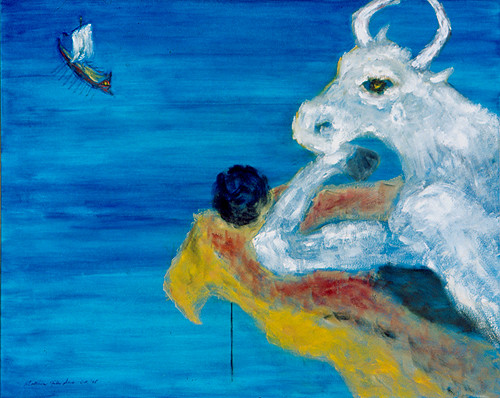
In 2005, I completed a painting of Minotaur. My Minotaur was a tormented soul. He did not view his slayer Theseus as enemy, rather than his liberator, from his heinous physical trapping. In eager anticipation, he observed the incoming galley in full sail. The ball of black thread, which would be given to Theseus by Ariadne to aid his exit from labyrinth, sat quietly next to Minotaur's elbow, and can be nudged off precipice easily. But, Minotaur was pensive and resigned to his fate and only shed a large clear tear.
My interpretation of Minotaur echoed an excellent and disturbing opera
Minotaur by
Harrison Birtwistle. The opera was premiered in 2008, and its programs says:
The Minotaur does not fully comprehend the duality of his physical nature as half-bull, half-man; only in sleep and, ultimately, in death does his human side become evident. Ariadne hopes that, with the help of the Oracle, she will enable Theseus to find a way out of the labyrinth should he survive his encounter with the Minotaur. She believes she can persuade Theseus to take her back with him to Athens. Both see the Minotaur as scapegoat and deliverance.
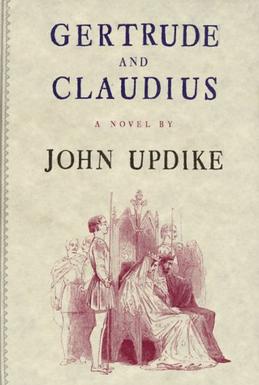
Some re-interpretation took different route. Instead of inventing a new dramatic twist, adding some obscure details serve the original stories well. One such effort was John Updike's
Gertrude and Claudius, which was a prelude to the famous Shakespeare play, focusing not on the Queen and Hamlet's fratricidal stepfather.
Another book in this vein I enjoy enormously was David Malouf's
Ransom. Publishers Weekly summarized the book thus:
Revisiting scenes from The Iliad and delving into the hearts of two ancient heroes, Malouf (Remembering Babylon) evokes the final days of the Trojan War with cinematic vividness. After Achilles withdraws his forces from combat, a move that cripples the Greek army, his best friend, Patroclus, persuades Achilles to let him take the Myrmidons back into combat and to wear Achilles' armor. After Trojan king Priam's beloved son, Hector, kills Patroclus, guilt, rage and grief drives Achilles on a frenzied quest for revenge that sees him slay Hector and then tie Hector's corpse to his chariot and drag it around the besieged city. Priam, desperate to stop the desecration, decides to visit the enemy camp and offer money in exchange for Hector's body. He hires a humble cart driver and, aided by Hermes, they set out on a journey that takes Priam into the unknown and toward a meeting with Achilles. Though Malouf's sparingly deployed details, vigorous language and sly wit humanizes these tragic heroes, the story is unmistakably epic and certainly the stuff of legend.
Legends never die. They live on in re-imaginations of generations after generations.






